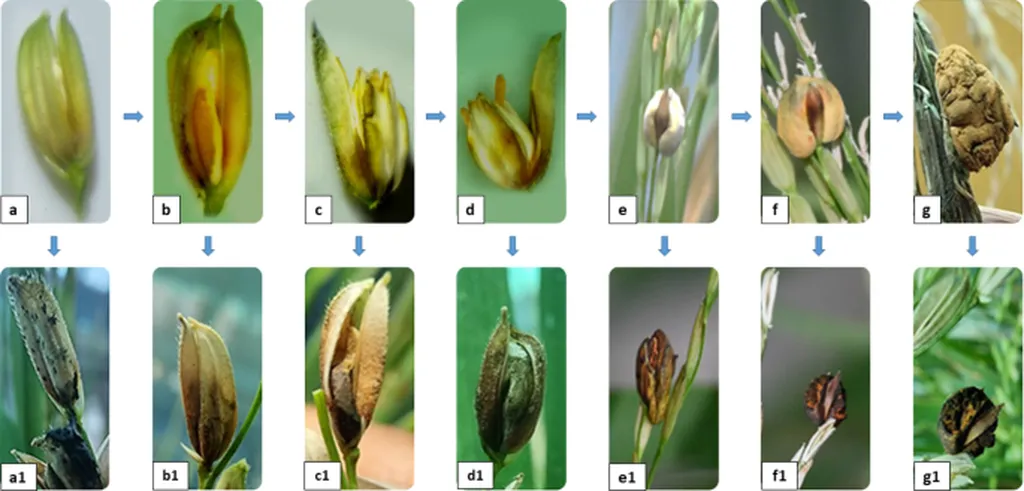In the heart of India’s rice-growing regions, a silent battle rages on—one that threatens the livelihoods of countless farmers and the nation’s food security. The culprit? Ustilaginoidea virens, the pathogen behind false smut disease, a menace that has long plagued rice crops. But a recent study published in the ‘International Journal of Bio-Resource and Stress Management’ offers a glimmer of hope, armed with cultural and molecular tools to tackle this persistent foe.
The research, led by Ravali Somshetty from the Department of Plant Pathology at Professor Jayashankar Telangana State Agricultural University, delves into the intricate world of U. virens, a fungus that has long evaded comprehensive understanding. The study, conducted between January and April 2022, collected isolates from rice fields across Telangana during the kharif season of 2021. The findings are a testament to the diversity and complexity of this pathogen.
Somshetty and her team discovered that the isolates exhibited a wide range of colony diameters and growth rates. “The variation in colony morphology was striking,” Somshetty noted, highlighting that some isolates grew up to 77 mm in diameter, while others barely reached 40 mm. This diversity poses a significant challenge for farmers, as the pathogen’s adaptability makes it difficult to control.
The study also revealed that the isolates could be grouped into five major clusters based on their cultural and morphological characteristics. This clustering is crucial for understanding the pathogen’s behavior and developing targeted control strategies. “Understanding the diversity within U. virens is the first step towards effective disease management,” Somshetty explained.
The researchers also employed molecular techniques to confirm the identity of the isolates. PCR amplification using universal and species-specific primers yielded products of 700 bp and 380 bp, respectively. This molecular confirmation is a significant advancement, as it allows for precise identification of the pathogen, even in the early stages of infection.
Phylogenetic analysis further revealed the genetic diversity of the isolates. Some belonged to clades comprising solely Indian isolates, while others were grouped with both Chinese and Indian isolates. This genetic diversity is a double-edged sword. On one hand, it complicates control efforts; on the other, it offers insights into the pathogen’s evolution and spread.
The commercial impacts of this research are substantial. False smut disease causes significant yield losses, and its control has long been a challenge. The techniques developed in this study can be used to monitor the pathogen’s spread and diversity, enabling farmers to take proactive measures. Moreover, the molecular tools can be integrated into breeding programs to develop resistant rice varieties, a boon for the agriculture sector.
Looking ahead, this research paves the way for further studies on U. virens and false smut disease. “Our findings provide a foundation for future research,” Somshetty said, emphasizing the need for continued investigation into this complex pathogen. As the world grapples with the challenges of climate change and food security, understanding and controlling diseases like false smut will be crucial.
In the end, this study is not just about a fungus and a disease; it’s about the farmers, the fields, and the future of agriculture. It’s a reminder that in the face of adversity, science offers hope, and understanding offers power. And as we stand on the brink of a new era in agriculture, this research is a beacon, guiding us towards a future where diseases like false smut are no longer a threat, but a challenge met and overcome.

